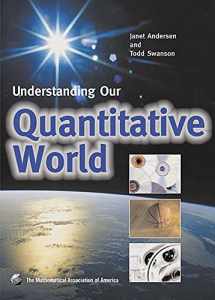
Understanding Our Quantitative World
Book details
Summary
Description
This book is intended for a general education mathematics course. The authors focus on the topics that they believe students will likely encounter after college. These topics fall into the two main themes of functions and statistics. After the concept of a function is introduced and various representations are explored, specific types of functions (linear, exponential, logarithmic, periodic, power, and multi-variable) are investigated. These functions are explored symbolically, graphically, and numerically and are used to describe real world phenomena. On the theme of statistics, the authors focus on different types of statistical graphs and simple descriptive statistics. Linear regression, as well as exponential and power regression, is also introduced. Simple types of probability problems as well as the idea of sampling and confidence intervals are the last topics covered in the text. The book is written in a conversational tone. Each section begins by setting the mathematics within a context and ends with an application. The questions at the end of each section are called ""Reading Questions"" because students are expected to be able to answer most of these after carefully reading the text. ""Activities and Class Exercises"" are also found at the end of each section. These activities are taken from public sources such as newspapers, magazines, and the Internet. Doing these activities demonstrates that mathematics can be used as a tool in interpreting quantitative information encountered in everyday life. The text assumes that students will have access to some type of technology such as a graphing calculator.


We would LOVE it if you could help us and other readers by reviewing the book
Book review



